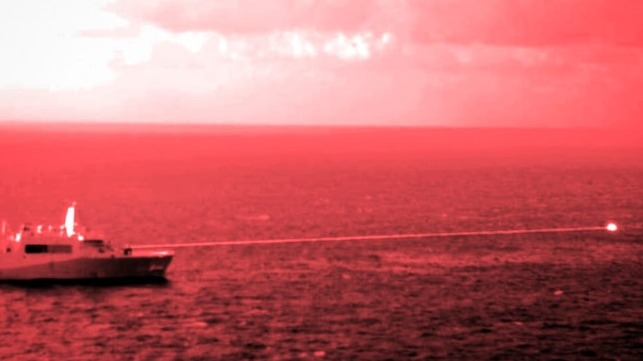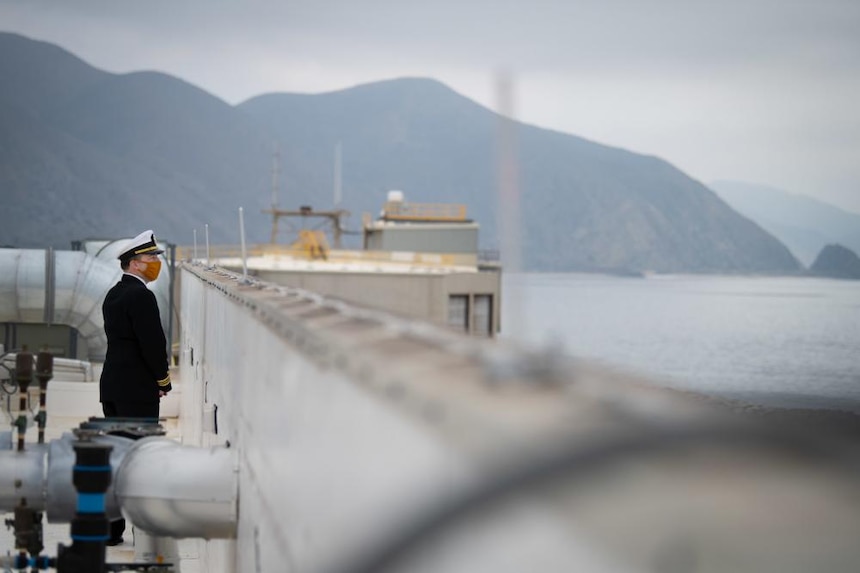U.S. Navy Accelerates Investment in Laser Weapons Systems

The U.S. Navy is making significant investments in laser weapons systems as it looks for ways to offset the rising capability of near-peer competitors.
On Tuesday, the amphib USS Portland successfully tested a high-energy laser against a practice target in the Gulf of Aden. She used a bow-mounted solid state laser (Laser Weapons System Demonstrator Mark 2 MOD 0) to engage the target. Portland previously tested the LWSD in May 2020, when she disabled a small unmanned aircraft while operating in the Pacific.
The 150 kw-class LWSD laser system was installed on Portland's deck in 2019, and it is a follow-on successor to the less-powerful 30 kw LaWS laser system installed aboard USS Ponce. Its primary role is in point defense, and it can be used to destroy small drone aircraft and swarming drone boats - two of the primary threats that the U.S. Navy might face in the Middle East. Both are regularly used by Iran's Islamic Revolutionary Guard Corps and IRGC proxy forces in Yemen.
The Navy has also installed another prototype laser system aboard at least three destroyers, including USS Stockdale, which now carries the ODIN low-power laser "dazzler," which designed to knock out cameras and infrared sensors. This lower-cost system can be used to target surveillance drones and the homing optical sensors on some cruise missiles.
A larger device made by Lockheed Martin, the High Energy Laser and Integrated Optical-Dazzler and Surveillance system (HELIOS), is slated for installation on a littoral combat ship platform. HELIOS has an intermediate capacity of between 60-150 kw, and could fulfill some of the same mission sets as both LWDS and ODIN.
The service is also ramping up laser weapons testing with the construction of a new R&D facility and test range at Point Mugu, California. A ribbon-cutting ceremony for the new facility was held on December 3, marking the end of a fast-pace two-year construction timeline. Officials described the need for its development as an urgent matter.
“The near-peer and actual peer adversarial threats faced by the Navy today are so stressing that if we don't have facilities like this, we are simply not going to be able to keep pace,” said Vance Brahosky, Naval Surface Warfare Center Port Hueneme Division's deputy technical director. “The speed of warfare has increased so dramatically and exponentially over the last several years that one of the best ways that our fleet is going to be able to fight and win is with speed-of-light laser technology-types of weapons.”
Ship Defense & Expeditionary Warfare Department Officer Lt. Cmdr. Levi Jones peers over the roof of the Directed Energy Systems Integration Laboratory (DESIL), Dec. 3. The facility is designed for testing laser weapons systems in a marine environment, and it has provisions for mounting prototype units on the roof.

